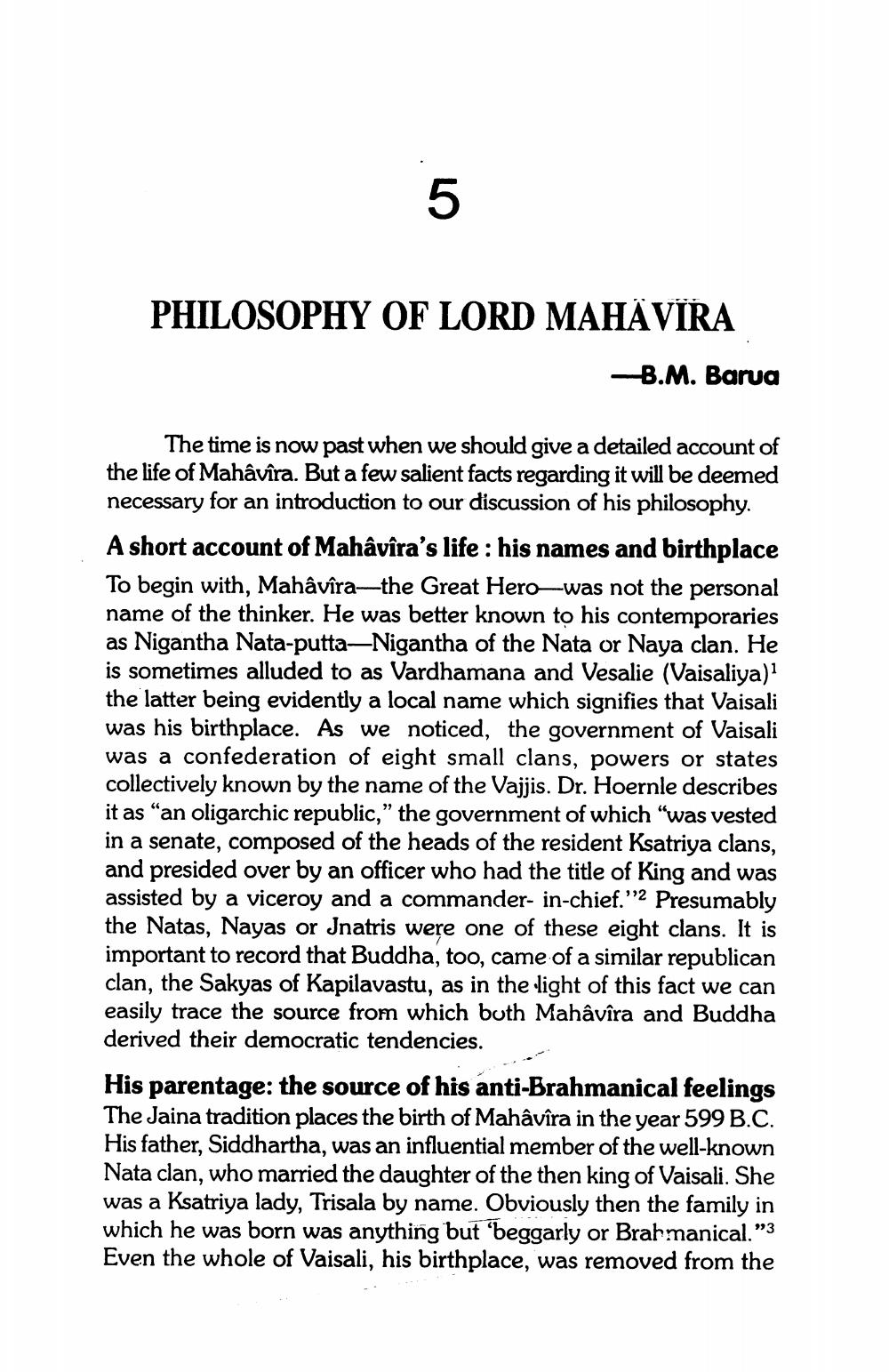________________
PHILOSOPHY OF LORD MAHAVIRA
- B.M. Barua
The time is now past when we should give a detailed account of the life of Mahâvîra. But a few salient facts regarding it will be deemed necessary for an introduction to our discussion of his philosophy.
A short account of Mahâvîra's life : his names and birthplace To begin with, Mahâvîra—the Great Hero—was not the personal name of the thinker. He was better known to his contemporaries as Nigantha Nata-putta—Nigantha of the Nata or Naya clan. He is sometimes alluded to as Vardhamana and Vesalie (Vaisaliya) the latter being evidently a local name which signifies that Vaisali was his birthplace. As we noticed, the government of Vaisali was a confederation of eight small clans, powers or states collectively known by the name of the Vajjis. Dr. Hoernle describes it as “an oligarchic republic,” the government of which "was vested in a senate, composed of the heads of the resident Ksatriya clans, and presided over by an officer who had the title of King and was assisted by a viceroy and a commander-in-chief.”2 Presumably the Natas, Nayas or Jnatris were one of these eight clans. It is important to record that Buddha, too, came of a similar republican clan, the Sakyas of Kapilavastu, as in the light of this fact we can easily trace the source from which buth Mahâvîra and Buddha derived their democratic tendencies. His parentage: the source of his anti-Brahmanical feelings The Jaina tradition places the birth of Mahâvîra in the year 599 B.C. His father, Siddhartha, was an influential member of the well-known Nata clan, who married the daughter of the then king of Vaisali. She was a Ksatriya lady, Trisala by name. Obviously then the family in which he was born was anything but 'beggarly or Brahmanical.”3 Even the whole of Vaisali, his birthplace, was removed from the




